How to Become a High-Tech Minimalist
Tags: Battery, clutter, dropbox, Evernote, linux, minimalist, productivity, servers, Shoeboxed, VMware, Windows
 This will be the first in a series of posts I’ll write about going minimal as a technologist in today’s world.
This will be the first in a series of posts I’ll write about going minimal as a technologist in today’s world.
The mere mention of the word “minimalist” or “minimalism” to most people means “getting rid of luxuries and convenience”, and going back to basics. The former is just a myth, but the latter is really the goal. Everyone can get by with a lot less “stuff” in their lives, but what remains can certainly be very convenient and still remain current, “cool” and functional.
Being a high-tech minimalist means reducing what you have, but not necessarily spending less to achieve that goal. To achieve the goal of reducing the amount of things in your life, you may have to spend more, to get less, so you can ultimately spend less in the future.
There are certainly extremists in this field, who want to try to get their lives down to zero-impact, zero-waste, zero consumption, but I am not personally on that side of the dial.
My life is surrounded by ones and zeros. Lots and lots of them. I have a lot of high-tech gear at my fingertips at any one time. This is my digital life. Multiple laptops, servers and dozens of chargers and cables are all jacked in at any one time in my life, not including my office at work and its various sundry items.
But I also have my analog life, which includes archives of paperwork going back 10-15 years. Boxes and file cabinets of paperwork, files, documents, articles, magazines, books and other material that I’ve needed to capture or save over the years.
As I move to the next stage of my life, I’m looking very hard at everything I own, everything I use, and making a very binary decision:
- Keep it (because I need it or use it on a regular basis)
- Let it go (because I no longer need it, use it, or have replaced it with something better)
There is no third option.
I’m approaching this new lifestyle change because frankly, I have too much stuff.
Stuff leads to clutter.
Clutter leads to chaos.
Chaos leads to living a confusing, unfocused life.
I need to reduce the complexity of my life, by reducing the clutter and chaos within it.
I keep telling myself that some day in the not-so-distant future, I’ll be living entirely off of my sailing yacht, off the grid. Yes, really. I have this goal set already, and I’m moving aggressively towards it by reducing the amount of “stuff” I have, so it fits in that environment.

So for now, here’s how I’m approaching that change in lifestyle, without sacrificing the passions of my life that make it worth living.
Clothing and Wardrobe
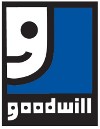
Over the last month, I’ve cut my personal wardrobe by about 30% total. All of those clothes went directly to my local Goodwill in Norwich, CT.
I have t-shirts, formal shirts, pants, sweaters and other clothes that I keep because they’re in perfect condition, but I hardly ever wear them anymore. Giving them to Goodwill will help others this year who may not be able to afford those clothes. I’m helping myself by reducing the amount of clothes I have (but don’t wear) and helping someone else, by giving them something they need, but can’t afford.
A lot of those shirts are getting “tight” anyway, not because I’m gaining weight, but because my upper-body is getting bulkier with my new workout regime. Out they went.
Seryn got into the spirit too, by donating some of her toys and other items that she wasn’t really using anymore. When we got to the Goodwill, I think she really began to “get it”, when she saw the people coming into and out of the store, and when we went around to the side where the “Donations” bay doors were, and she saw all of the second-hand and third-hand items being brought in by others.
Papers and Documents

Then I took the reams of old paperwork and either shredded it (10+ large garbage bags full; yes, that’s really my arm in that photo), or digitized it (using the NeatDesk I bought a few months ago) and stored that on my Drobo (which is encrypted and mirrored offsite at another location).
This reduced the number of boxes of paperwork I normally have in my office by 75%! I’m not done with the digitizing though, and there’s still much work to be done with the digital side of organizing all of that.
For receipts that I’ve kept and need to retain (for tax purposes or returns or whatever), I may be able to use the Evernote + Shoeboxed integration to do just that.
“Shoeboxed is a service that will scan all your business cards and receipts. You just stuff all that paper into an envelope and mail it to Shoeboxed. Some accounts even get a special blue Shoeboxed envelope that come postage-paid and pre-addressed, to get rid of even that small burden. Think of it as Netflix for your papers.
Once Shoeboxed receives your stuff, they scan everything and make it available online. Now for the really cool part, you can send any of that content from Shoeboxed into Evernote, where those business cards, receipts, and any handwritten scribbles become searchable. All you need is your Evernote email address, which you can find in the settings page of you Evernote Web account”
There is, naturally… a significant privacy issue with that, but for generic, non-private receipts, it might make things a lot easier in the long run.
Books, Magazines and Periodicals
But what about the books and magazines!?
The magazines I can digitize in-full (with the NeatDesk) if I need to keep them entirely, but what I’ve really been doing is slicing out articles I want to keep with my X-ACTO Laser Trimmer. The accuracy of that is so much better and faster than clipping with scissors. That reduced piles of magazines to a stack of articles I want to refer to later.
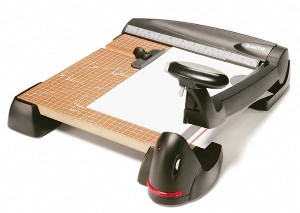
But how do I do that?
Now that they’re digitized, I can put them in Evernote, and index them with tags and have the text of the articles made searchable. This is much nicer than just having a manila folder of clipped articles in a file drawer, or even a directory of scanned PDF or images of the articles on my computer. Now I can refer to them by word, search term or tag on my BlackBerry if I choose, using the Evernote BlackBerry client.
For other books and periodicals, I’ve picked myself up a Sony Touch e-Ink reader device. It’s not the best device out there, but it is small, thin, portable, and suits my reading habits for now. I looked into the Kindle (too restricted and too large), the Nook (sub-par battery life with the color gesture panel, too large), and the Alex and Que (both not out yet), and settled on the Sony Touch for now.
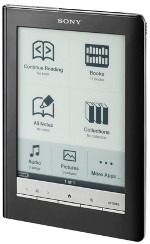
With this, I can download any books from the Sony eBook store, Project Gutenberg or any documents from my own collection (Office, PDF, text or otherwise).
Since the device also supports the EPUB format, thousands of free titles automatically become available to me. Using calibre on Linux also allows me to sync RSS feeds and newspapers to the device as well.
Now they’re available to me at all times, anywhere I go.
If you’re interested in some other ways to digitize some dead-tree books, check out BookLiberator and Daniel Reetz’s book scanner project.
“BookLiberator is a set of free software and hardware to digitize books: it lets you photograph all the pages in a book without harming the book. The resulting images can be processed with free, open source software to make user-friendly files in a variety of formats.”
DIY Book Scanning also has lots of useful links and resources to similar projects, plans and discussions.
Cooking and Kitchenware

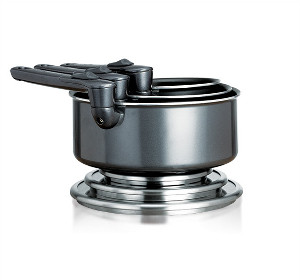
This is the hard part, because I love to cook and I love to eat. A lot. You wouldn’t know it by looking at my road cyclist body type, but I pack in a lot of calories. Looking at my kitchen, it is already pretty minimal. I don’t drink coffee, so I don’t need a grinder or coffee maker. I do have a passion for tea, and I can brew that in any sized pot as needed.
The appliances are another matter. I have a toaster, a George Foreman grill, a really nice blender and those pesky pots and pans to contend with.
Lately, I’ve been eyeing this Compact Cookware set from T-Fal, but the only place they actually sell it, is in the U.K., and nobody there will ship it to the US, not even Amazon UK. Home Shopping Network claims to have it, but every time I check, it appears to be sold out.
The features I like best about this are a.) the removable handles, and b.) the lids fold truly flat. This means you can pack the whole set, handles lids and all, into a single drawer, and not have to hang it from a rack or put it on a shelf.
Do I really need 3 frying pans, 4 pots, a sauté pan and various assorted sizes of lids for these? Definitely not. I’m still on the prowl to find something that reduces that number, and is collapsible or stackable so I can get them out of the main part of the living space and into a drawer or cabinet.
Computers and Technology
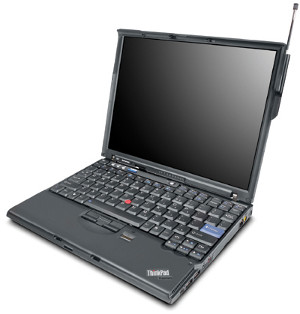
This one should be fairly easy, as technology comes in every size, shape, color and capacity you could imagine. You can get converged devices (smartphone), discrete devices (gps, phone, mp3 player), storage in every imaginable format (external, internal, flash, HDD).
But when you actually need to interact with as many computers as I do, things get challenging. You can only virtualize so much computing power with products like VMware, VirtualBox and Xen, when you eventually need more physical computers to power the virtualization of it all.
Virtualization only solves part of the problem, but creates another, especially if your goal is minimalism.
I also need to use my laptops, for different purposes. That means at least 2 physical laptops (native Windows and native Linux, with Windows virtualized on the latter).
For me, this is going to be one of the harder parts of minimizing my life. I need my physical servers and I need my laptops; that right there is at least 5 separate, physical machines. I also need my storage and NAS devices. These things add up.
What I can do however, is look into higher-density systems, and partitioning my physical systems into discrete separate systems. There are some newer technologies out there that can help.

I’m still researching this one though.
I want to make sure I’m making the right long-term decisions with all of my choices, so I can ultimately get myself off the grid, but still retain the function I need out of my devices and my technology.
This is just the start, but it’s where I’m heading over the next few months and into 2010. I don’t need as much stuff as I have, and getting by with a lot less “stuff” (but dramatically increased function and productivity), will help me achieve my longer-term goals much faster.
The move to the new house this week, the markedly-reduced spending habits and decreasing my personal belongings by 50% by the end of 2010 are the steps I’m already taking to reach those goals.
There is more to come…
